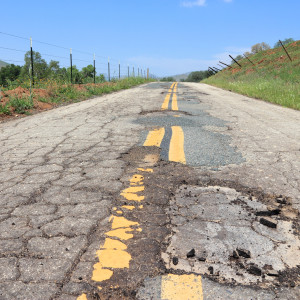What elements of U.S. infrastructure need attention the most? How should we pay for it?
These are good questions, but they have no clear answer. Before we discuss possible solutions, let’s go back and look at what brought us to this discussion.
For almost 100 years, America’s infrastructure has been the envy of the world. From the Transcontinental Railroad to the inland waterway system, the Hoover Dam, the interstate highway system, and wide deployment of broadband, our nation boasts an impressive history of state-of-the art infrastructure.
But like those of us who own a home, failure to maintain infrastructure often means minor issues turn into problems that require major reconstruction.
In the infrastructure market, the American Society of Civil Engineers Infrastructure Report Card tells this sad story, ranking the nation’s infrastructure as a D-plus. Shockingly, this is actually an improvement from a D grade in the previous report.
Of the 16 types of infrastructure graded on its condition, solid waste received the highest grade with a B minus, and inland waterways earned a lowly D minus. The report states that the United States, at all levels of government, would have to invest $3.6 trillion to bring the country’s infrastructure to a state of good repair by 2020.
Study after study has shown that investing in infrastructure supports improved safety, economic growth and quality of life. Neglecting to maintain infrastructure will have the reverse effect; just look at recent examples like the Flint, Michigan, water crisis, the I-10 bridge collapse in Desert City, California, and the recent shutdown of the Washington Metropolitan Area Transit Authority due to safety issues.
The state of our nation’s infrastructure can be summed up in several alarming truths, including facts like these:
—21.4 percent of America’s bridges are considered deficient.
—Almost 20 percent of major roads in the United States are considered to be in poor condition.
—The United States ranks 16th globally for quality of infrastructure, according to the World Economic Forum.
So how does our country prioritize these needs and back them up with necessary investment?
Our first priority must be safety, including on the issues of drinking and waste water. For example, Congress is currently debating legislation that would, in part, authorize financing for water infrastructure projects in cities like Flint, Michigan, and across the country, to be supplemented by state and local governments as well as private-sector partners. Modernizing our water infrastructure should be a priority for governments at all levels, and the private sector also has a role in the solution.
Another area of focus should be on surface transportation investments, like repairing the nation’s deficient bridges or taking up the $86 billion in deferred maintenance on our public transportation systems.
Congress and the White House recently approved a $305 billion, five-year surface transportation bill, the Fixing America’s Surface Transportation Act. The law rightly provides significant increases in bridge and public transportation investment. The FAST Act will also allow the streamlining of the environmental review process for bridge repair, using limited investments in a more focused manner. Investment in the public transportation’s “state of good repair” program will grow from $2.1 billion in fiscal year 2015 to $2.68 billion in fiscal year 2020.
We are also seeing state and local governments step forward with their own investment plans to supplement the FAST Act. Following up on the eight states that increased their motor fuel tax to meet transportation infrastructure goals in 2015, states such as California, Connecticut and New Jersey are having the discussion this year.
Here’s the bottom line: The time to make important infrastructure investments is now. Delaying only makes the decisions more difficult and more costly. Our nation needs a toolkit of options that all levels of government and the private sector can use in order to address the infrastructure financing deficit.

